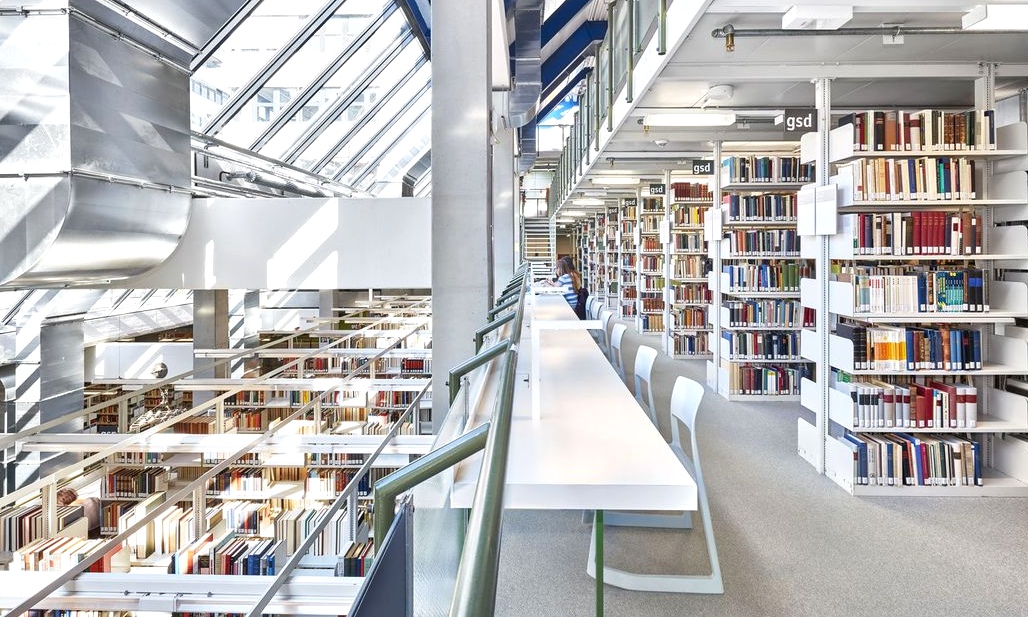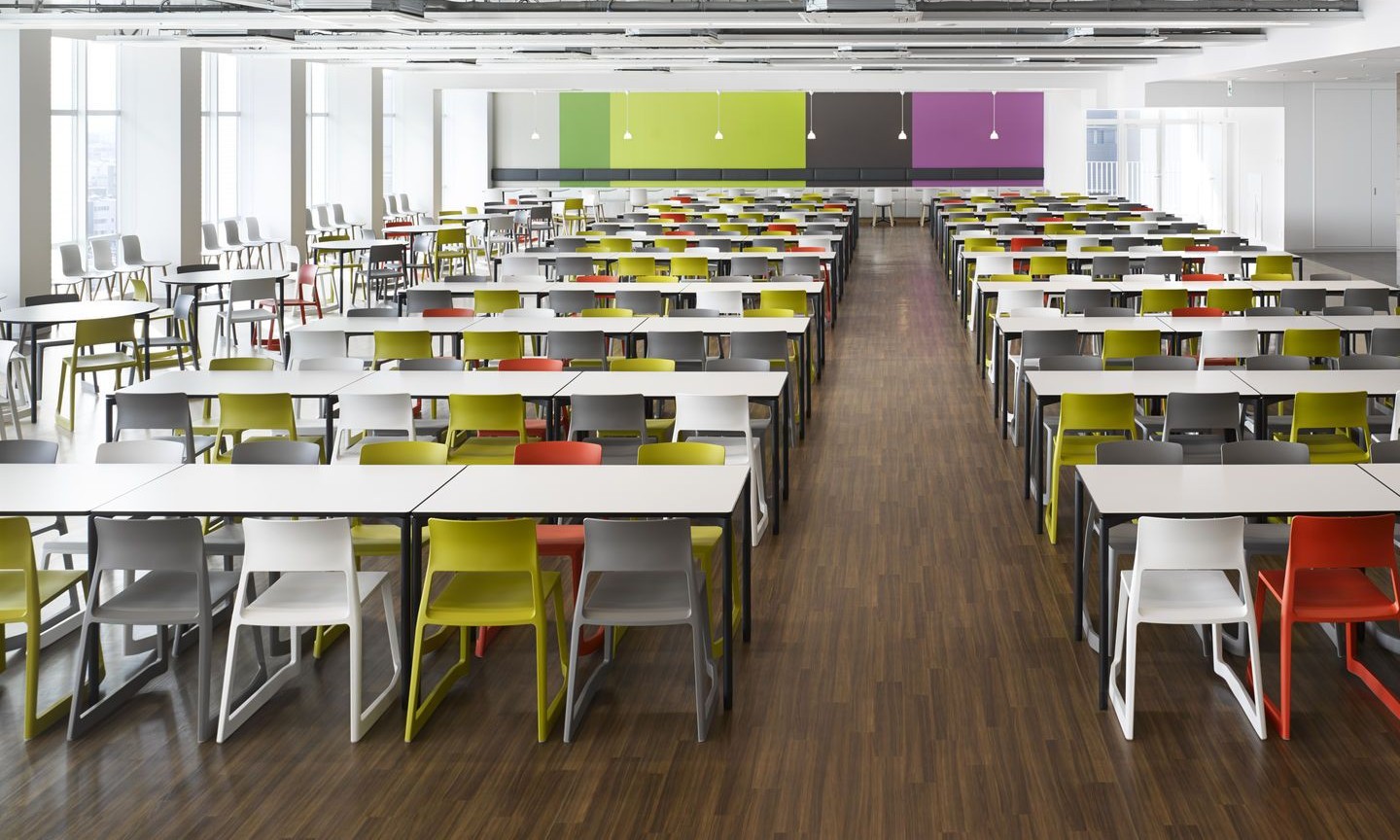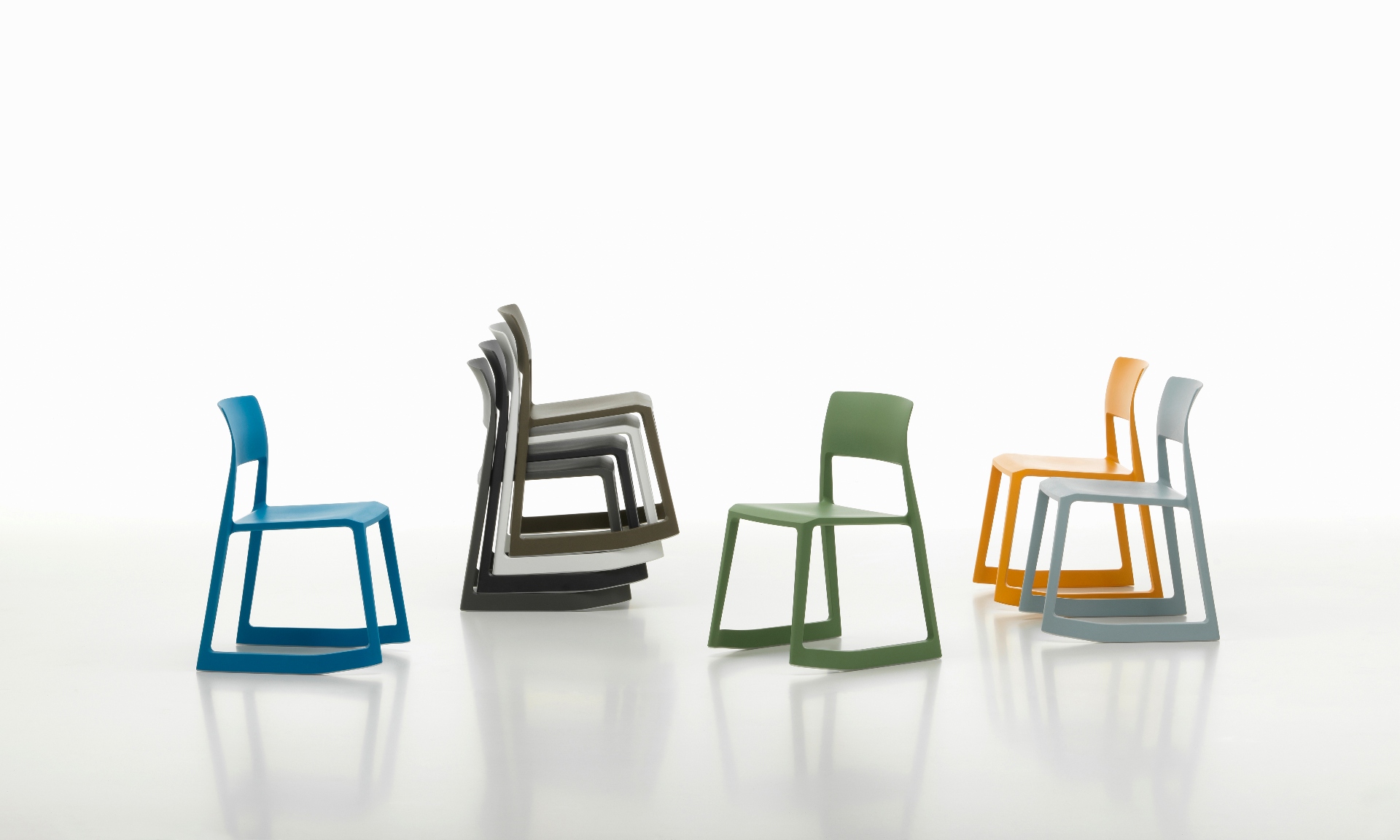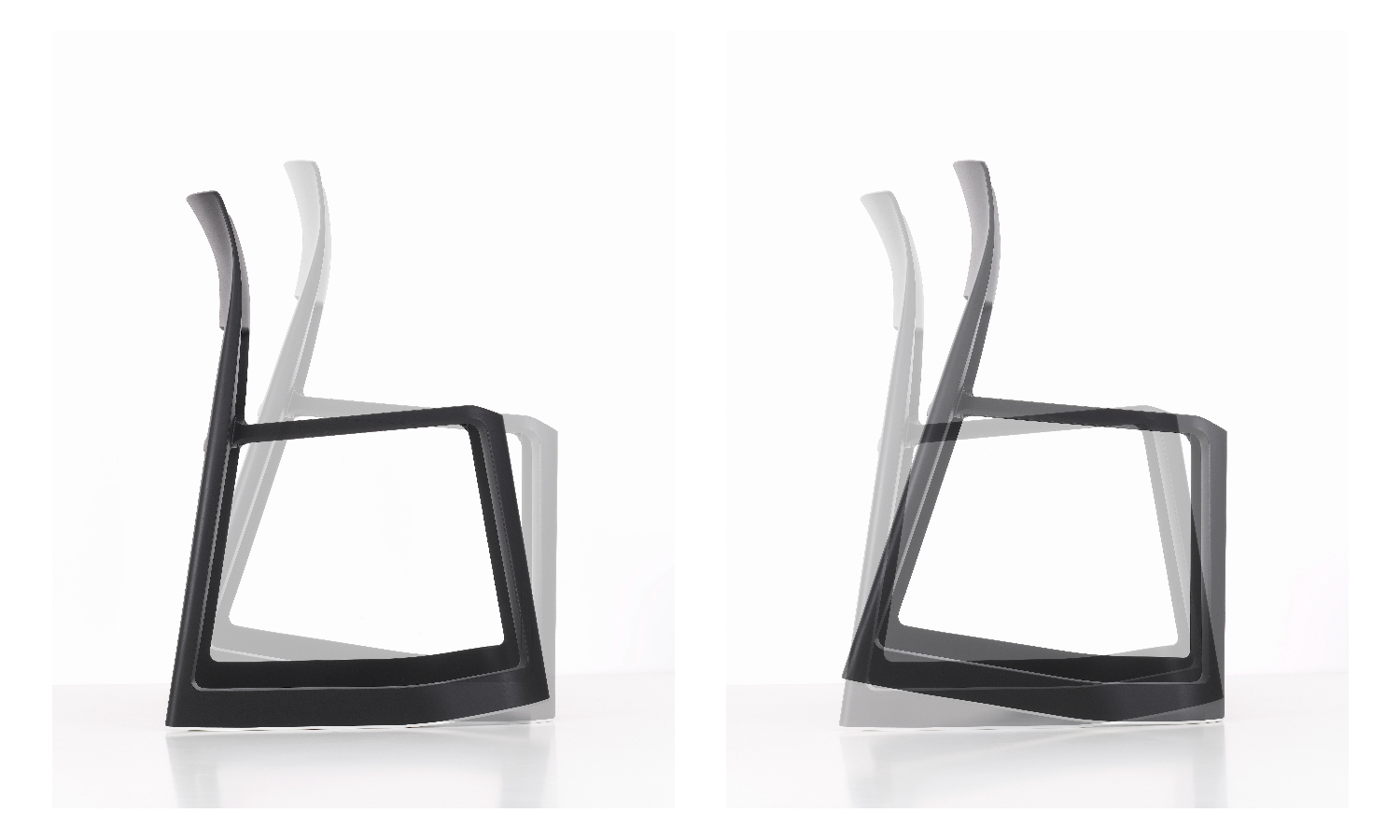An interview with Vitra Chief Design Officer Christian Grosen about Tip Ton RE an update to the Tip Ton chair by Edward Barber and Jay Osgerby made from local upcycled household waste
The most striking characteristic of Edward Barber and Jay Osgerby’s Tip Ton chair, which launched in 2011, is the forward-tilt function. Originally developed for a school in the English town of Tipton, the chair is now used not only by educational institutions but also for home offices, around dining tables and in gardens. In 2020, the product line was expanded with the new Tip Ton RE made of recycled material.
Producing long-lasting products has been Vitra’s primary contribution to sustainability since its beginnings. This holistic approach was actively expanded in the mid-1980s by reducing energy usage and investing in renewables at Vitra’s factories and offices. Raw materials have been assessed to exclude those that depend on hazardous or overly energy-intensive processes. Ninety percent of the aluminium used in Vitra products is recycled, and leather and cork are sourced from like-minded partners in Europe.
Regarding plastics, the company has relied on the logic that sourcing the best quality materials help to keep the objects it produces at the apex of the value chain. Making durable objects, tomorrow’s heirlooms, is far removed from the throwaway culture that generates plastic waste. Take-back and refurbishment services further extend the lifespan of products.
Plastic is a cornerstone material in Vitra’s history. The first product developed by the Swiss manufacturer in collaboration with a designer was the Panton Chair, which depends on the unique strength of a synthetic polymer for the sinuous cantilevered form that made it an iconic design of the 1960s.
Now, the company has issued its first recycled plastic chair; a version of the Tip Ton model designed by Edward Barber and Jay Osgerby in 2011. Tip Ton is famous for incorporating in its moulded form something other manufacturers had only been able to offer via complex mechanisms: allowing users to change the seat angle for better task concentration.
The Tip Ton RE uses 3.6 kg of recycled polypropylene – which only months before might have been shampoo bottles or yogurt pots in the homes of German consumers before reaching Vitra’s injection moulding lines via the country’s ‘Yellow Bag’ recycling scheme.

Chief Design Officer Christian Grosen Rasmussen shares some of the thinking behind Tip Ton RE.
For Vitra’s first recycled plastic chair, was it a challenge re-engineering a design from the collection rather than starting with a new commission?
The reason for choosing Tip Ton was that it consists of a single material. Working on an existing product is a good way to gain experience with a new material. Though recycled polypropylene is still a type of plastic, it’s different to work with. When dealing with an existing product, you already know the technical challenges that might crop up, and you can anticipate those from the beginning. Due to the combination of an almost archetypical appearance and its new idea for movement, the Tip Ton chair encapsulates what Vitra is all about – innovation and longevity. This made it a good place to start.
What was different about working with a recycled material?
The challenge was to make the chair strong enough, which is often the issue when working with recycled materials. That’s why we added some fibreglass to strengthen the chair – while using as little as possible. Of course, when you combine fibreglass and polypropylene, it’s harder to achieve a perfectly uniform surface. That requires a lot of experience, which is why it was an advantage to know about the mould flows and technical aspects of the chair’s geometry. From the beginning, we decided that we didn’t want the material to result in any compromises on the quality of the chair. We wanted it to achieve the same certifications as the existing Tip Ton chair. It was an iterative process to determine the minimum amount of glass fibre while still meeting the desired quality standards.

How did you decide on the source of the polypropylene?
When you work with recycled plastic, you can choose between post-consumer or post-industrial material, even ocean plastic; and there are advantages and disadvantages with each. What we liked about the Yellow Bag system was that it was very easy to trace the journey. You take packaging waste from households; you clean it and chop it up. Then you turn it into something new that lasts. Local sourcing is also important; the material is collected in Germany and the chair is made in northern Italy. The great majority of our suppliers are located in Germany or neighbouring European countries. This is also where most of our products are sold. You see companies producing injection-moulded chairs in Asia with material collected in Europe, so the material has to be transported there and back, inevitably leaving an unnecessary carbon footprint.
The original Tip Ton comes in eight colours, but the recycled version is only produced in pale grey.
Yes. It’s very hard to separate the colours of recycled waste, so if you want to have specific colours, you have to add pigments or bleach, and we didn’t want to do that. We wanted to keep the material as clean as possible, so what you see is what you get. There are tiny specks of other colours in the grey, which vary slightly from chair to chair. But for me that adds interest and pushes our perception of plastics. The slight variations in the recycled material add depth and give it a story, similar to how the structure of a piece of wood tells you about the tree’s growth cycles.
How did you test the chair for strength and durability?
All Vitra products go through rigorous testing, depending on the norms we want to achieve. BIFMA [the US Business and Institutional Furniture Manufacturers Association] testing and European standards such as EN or GS require thousands of usage cycles to achieve certification. There are machines that apply forces and drop tests with falling objects. We have invented some of our own tests, which are even more demanding. It was important that this chair achieves the same levels as the original version.

Making products for a circular economy places limitations on designers and manufacturers. How do you feel about those constraints?
It’s a huge challenge. You need a different mindset, but we are adapting to it, because it’s the way we need to think and act now. It’s part of the designer’s and company’s responsibility. In this dialogue we push each other towards a more circular way of thinking. Testing new materials and processes can give you unknown results; it always leads to some kind of learning and adds to the knowledge base on the circular economy. This is different from finding only a new aesthetic or a new function. We view this as a very relevant challenge. The rules are not yet written, and we are writing ours as we go.
What have you personally learned from the Tip Ton RE project?
On a visit to the material supplier, I saw a bag of the shredded food packaging. It was before it had been washed, and you could still smell the food. It made me really happy to think of this waste being turned into a beautiful object that could be used for many years. The journey from disposable materials to lasting products really makes sense to me. I had another insight when I heard an interview with a leading acoustic engineer. He said there are no good or bad acoustics, just ones that are right or wrong for a given purpose. That reminds me of how we should use plastic. It’s a fantastic material and will be with us for a long time, but there are right and wrong ways of using it. The critical thing is to understand when to use recycled plastic, when to use new material, and when to combine them to achieve products that people will keep and utilise for as long as possible.


